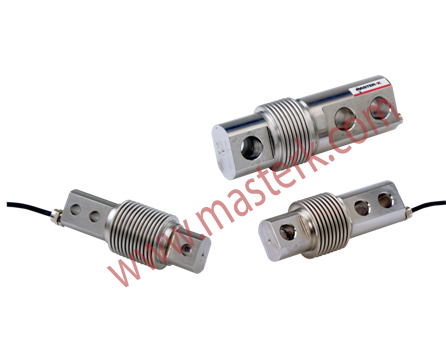What are bending load cells ?
These devices are designed to accurately measure mass.
Measuring the weight of an object is based on the mechanical principle of bending. These sensors are widely used in a variety of industrial, commercial and scientific applications where accurate weight measurement is essential.
How do they work ?
The principle of bending measurement is based on the deformation of a flexible material when a load is applied. These sensors are generally made from a metallic material, such as steel, aluminum, or a specific alloy that exhibits a significant elastic property.
The bending load cell usually consists of a beam or bending element with a specific shape, often in the form of an arm. When a load is applied to the free end of the beam, it deforms proportionally to the weight of the load. This deformation causes a change in the configuration of the sensor, and it is this change which is used to determine the value of the applied weight.
The strain gauge is generally glued to the surface of the beam. As the beam bends under load, the strain gauge also experiences deformation. This deformation causes a variation in the electrical resistance of the strain gauge, which can be measured using an electronic circuit.
A reading device, often an analog-to-digital converter (ADC) or specific processing circuit, interprets the resistance change into a digital value representing the applied load. This digital signal can then be converted to a weight measurement in an appropriate unit of mass, such as kilograms or pounds.
What are the differences between bending load cells and bending beam load cells ?
Those two appelations are terms often used interchangeably, but they may refer to slightly different concepts depending on the context. Generally, both are types of load cells designed to measure force or load in bending applications. However, the terminology might vary, and the distinction may not always be clear-cut.
Bending Load Cells:
This term is broad and can refer to any load cell designed to measure bending forces or loads. It doesn't specify a particular design or structure.
They can encompass various types, including bending beam load cells, shear beam load cells, and others that rely on bending deformation to measure force.
The term "bending load cell" doesn't provide specific details about the load cell's construction or application.
Bending Beam Load Cells:
They are a specific type of load cell that operates on the principle of bending deformation.
They typically consist of a cantilevered beam structure, often made of metal, that deforms under applied load. Strain gauges are bonded to the beam to measure this deformation, and the change in strain is used to calculate the applied force.
Bending beam load cells are commonly used in various industrial applications where precision and reliability are crucial.
What are the advantages of bending load cells ?
Now that we know the differences between bending and bending beam load cells, let us discover the advantages of bending load cells. One of the advantages of flexural load cells is their high accuracy and high sensitivity, making them suitable for a range of demanding applications. However, they can be sensitive to certain environmental conditions such as temperature and humidity, which may require additional compensations or calibrations to ensure accurate measurements in changing environments.
To conclude :
In conclusion, bending load cells play a vital role in accurate weight measurement in various industries and applications. Their operating principle based on the mechanical deformation of the beam under load allows reliable and reproducible measurements to be obtained, thus contributing to numerous activities ranging from the control of industrial processes to the weighing of commercial products.
-------------------------------------------------- ------------------------------------------------General characteristics of the bending sensor:
- Protection rating IP68
- This flexion load cell is particularly suitable for all high-precision industrial weighing applications. It is approved in 3,000 d in OIML class III. (also available in 6,000 d)
Electrical characteristics of the stainless steel flexural weighing sensor:
- Recommended supply voltage range: 10 Volts
- Supply voltage range: 1 to 15 Volts
- Rated sensitivity: 2 mV/V ± 1%
- Initial zero range: ±2.5% of rated load
- Input impedance (resistance): 385 Ω ± 20Ω
- Output impedance (resistance): 350 Ω ± 5Ω
- Insulation resistance: 2000 to 5000 MΩ depending on nominal weighing capacity
Mechanical characteristics of the bending sensor:
- Allowable mechanical overload: 150% Emax
- Compensated temperature range: -10 to +50 C°
- Degree of protection: IP68 (EN 60529 standard)
- Compensated temperature range: -20 ... +60 C°
- OIML approved operating temperature range: -10°C /+40°C
- Material: Stainless steel
- Cable length: 3 to 5 m depending on sensor model
-
 More
More
 Français
Français English
English Español
Español






